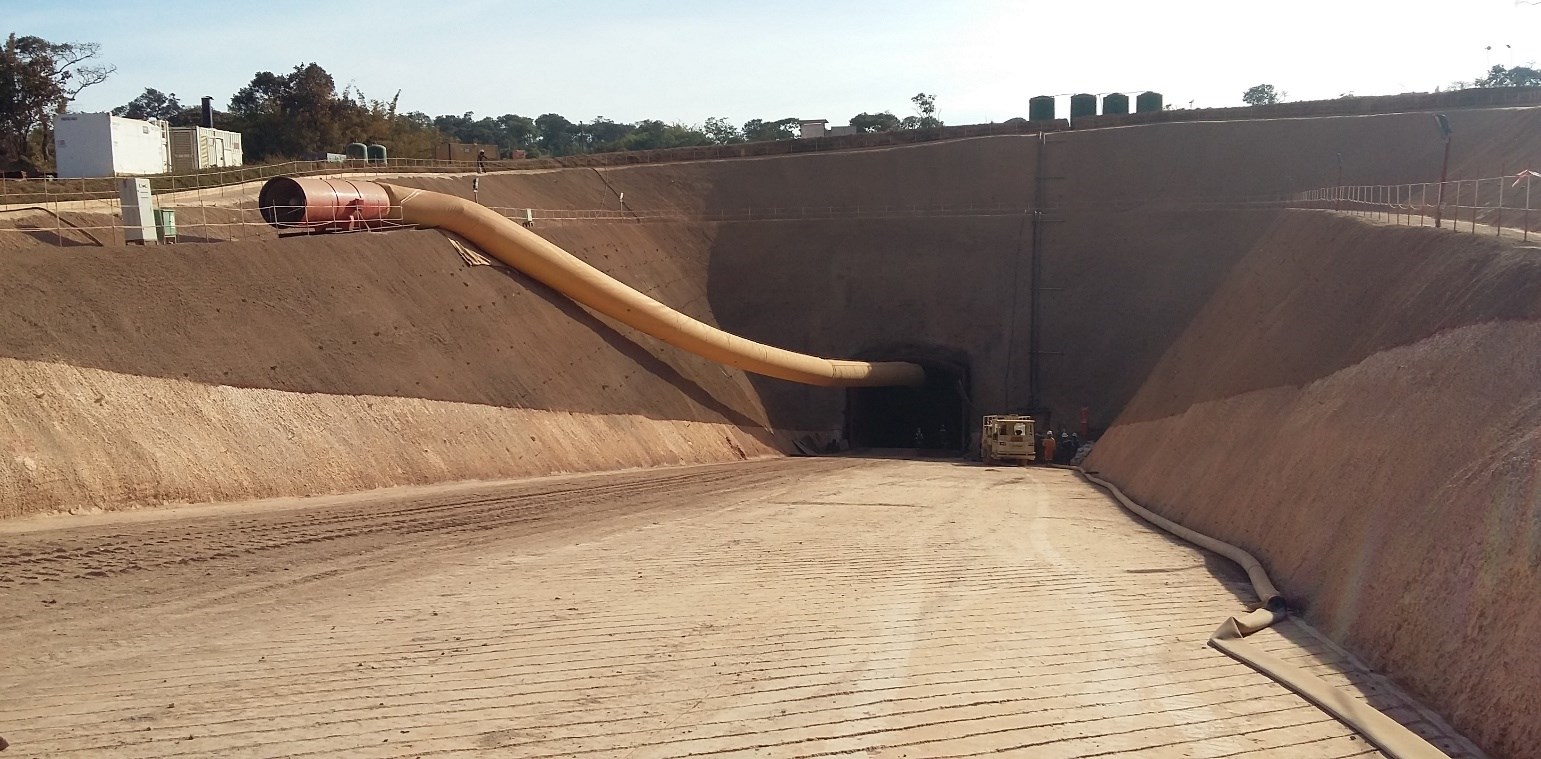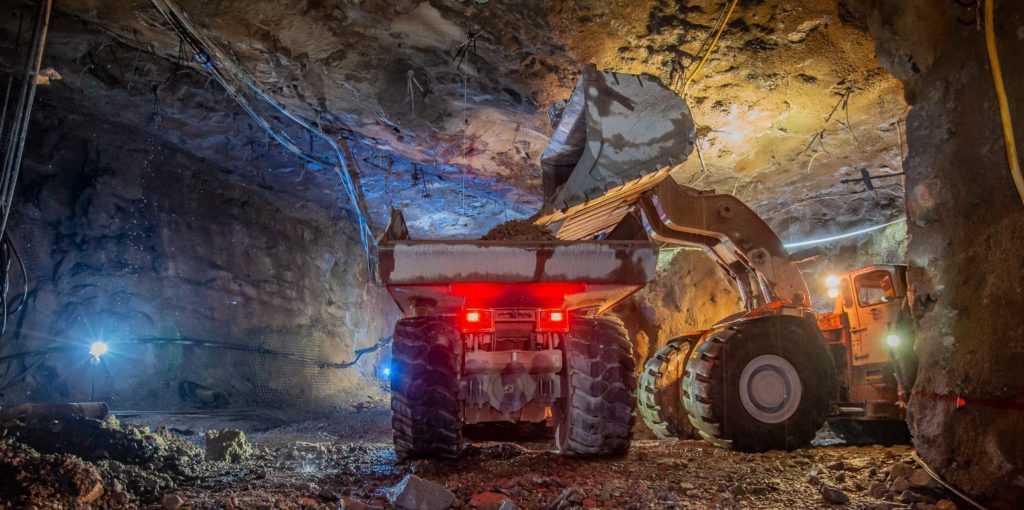Development is speeding up at Ivanhoe Mines’ majority-owned Kamoa-Kakula copper project in the Democratic Republic of Congo, with the first access drives approaching Kakula’s initial high-grade ore and earthworks for the surface processing plant having now commenced, the Toronto listed company says.
Mining OEMs will be getting excited too, with tenders for long-lead mining and processing equipment now issued and orders expected to be placed shortly, Ivanhoe said.
In February, Ivanhoe unveiled a prefeasibility study for a 6 Mt/y mine at Kakula, which envisaged an average annual production rate of 291,000 t of copper at a mine-site cash cost of $0.46/Ib ($1,014/t) of copper and total cash cost of $1.11/lb copper for the first 10 years of operations. Annual copper production would step up to 360,000 t by year four, the company said. This came with an initial capital cost of $1.1 billion and would result in an after-tax net present value (8% discount) of $5.4 billion factoring in an average copper price of $3.10/lb. In addition to this, the company unveiled an updated preliminary economic assessment combining both Kakula and Kamoa into an 18 Mt/y operation.
Shortly after this, various stakeholders advanced money for the project, getting Ivanhoe, as the operator, and Zijn Mining, as a partner, to the point where they were both able to fully fund their share of capital costs required to bring the mine into commercial production.
In the latest update on the project, Ivanhoe said “excellent progress” was being made on the construction of the 6 Mt/y Kakula copper mine. Initial copper concentrate production from the Kakula mine currently is scheduled for the September quarter of 2021, with the initial, five-year, detailed mine design now finalised and production scheduling in progress.
The full, detailed mine design will be included in the independent definitive feasibility study that is expected to be published early next year.
Approximately 2,500 employees and contractors now are working at the project as Ivanhoe advances construction of the project’s initial mine at the Kakula deposit.
A total of 647 m of underground development was completed last month, some 100 m more than achieved in April. Lower-grade development ore is being stockpiled on surface near the site of the concentrator plant, which will be used for plant commissioning.
“Mine access drives 1 and 2 (interconnected, parallel tunnels that will provide access to ore zones) are approximately 200 m from Kakula’s initial high-grade mining area, and these priority drives are expected to intersect the higher-grade ore in late July or early August this year,” Ivanhoe said.
The underground development work at Kakula is being performed by mining crews operating large-capacity, semi-autonomous mining equipment, such as jumbo drilling rigs and 50-t trucks (shown above).
The Kakula mine access is via twin declines on the northern side (which have been completed) and a single decline on the south side of the deposit (under development). One of the northern declines will be the mine’s primary access way, while the other will be for the ore conveyor haulage system. The southern ventilation decline will serve as a secondary access and will facilitate the acceleration of critical, early mine development.
From the bottom of the northern and southern declines, a pair of perimeter drifts will be driven to the east and west extremities of the deposit and will serve as the primary accesses to the production areas. These drifts also will be used as the primary intake and exhaust ventilation circuits and will connect with the intake and exhaust ventilation shafts. Underground access to the first raise bore ventilation shaft has been reached, Ivanhoe said. The pilot hole for the 177-m raise bore has been completed, and reaming of the 5.5-m diameter ventilation shaft is expected to be completed next month, according to the company.

The primary ore handling system will include perimeter conveyor drifts and load-out points along the north side of the deposit. The perimeter conveyor drifts will terminate at the main conveyor decline. Connection drifts between the north and south perimeter drifts will provide access and ventilation to the planned mining areas.
Around 99% of the deposit will be mined using the drift-and-fill method, which was chosen to maximise the overall extraction of Kakula ore, Ivanhoe said.
The tailings will flow through a series of cyclones at the backfill plant, and approximately 55% of the tailings will be sent back underground into the mined-out workings as paste backfill. The remaining 45% of the tailings will be pumped to a small tailings storage facility that is being designed by a team of international engineers to meet global best practices for safety, Ivanhoe said.
“The detailed design for the truck-tipping area, where underground ore will feed onto the conveyor system for transportation to surface, and the conveyor system for the main declines, has been completed and component manufacture is underway,” the company added.
Three underground mining crews are working at Kakula. Once Ventilation Shaft 1 is completed and fans have been installed, an additional three crews will be mobilised to accelerate mine development, which is scheduled for October 2019.
Development of an additional access and ventilation decline on the southern side of the Kakula orebody is progressing well and has advanced more than 200 m, Ivanhoe noted. A surface piling rig machine has been mobilised to prepare for the raise bore civil construction for Ventilation Shaft 2.
The DRA Global detailed engineering work on the project includes the engineering and design associated with all underground mining infrastructure, the concentrator plant and all supporting surface infrastructure. This engineering work is running in parallel with an independent definitive feasibility study that is expected to be completed early next year.
“An agreed, detailed budget, and construction and implementation plan is being finalised with Ivanhoe’s joint-venture partner Zijin Mining,” Ivanhoe said. “The project also will be further optimised and adjusted based on the development progress of the project and on the results of the definitive feasibility study.”
On May 22, the project’s construction team commenced breaking ground for the surface processing plant, marking the start of the concentrator construction. The Kakula concentrator will be constructed in a phased approach with two 3 Mt/y modules, as the mining operations ramp up to a full ore-throughput rate of 6 Mt/y. Kakula is expected to produce a very-high-grade copper concentrate in excess of 55% copper, with extremely low arsenic levels, according to Ivanhoe.
The processing plant flow diagrams, process control descriptions, and processing equipment lists have been completed and piping and instrumentation diagrams are being finalised, the company noted. “Tenders for long-lead items such as cone crushers, ball mills, thickeners, high-pressure grinding rolls, flotation cells, regrind mills, concentrate filter and low entrainment flotation cells, have been issued to the market and bids have been received. The Kamoa-Kakula project team in conjunction with DRA is in the process of adjudicating the tenders. Orders are expected to be placed shortly.”
In addition, the tender for the plant civil works has been issued. All bids have been received and are under adjudication. Tenders for smaller equipment for the processing plant such as agitators and samplers have been issued to the market.
Earlier this month, the Kamoa-Kakula project achieved a total of more than 14.5 million work hours free of lost-time injuries – it has been approximately seven years since the last lost-time injury occurred at the project. “This outstanding achievement reflects the dedication to a safety-focused culture of the entire Kamoa-Kakula exploration and development teams,” Ivanhoe said.
Ivanhoe also provided an update on the upgrading work at the Mwadingusha hydropower plant, which it said was progressing well. This project is important to the Kamoa-Kakula project as it is providing clean hydro-electricity to the site from the national grid.
“Construction activities at the Mwadingusha hydropower station are progressing well and Ivanhoe expects that the full upgrading and modernisation of the hydropower plant and its six generators to be completed in late 2020,” Ivanhoe said. “This upgrading work is pursuant to an agreement with the DRC’s state-owned power company, La Société Nationale d’Electricité (SNEL), and is in exchange for a guaranteed 100 MW of electricity – more than enough power for the Kakula mine. The Kamoa-Kakula project has been receiving hydroelectric-generated power from the national grid since late 2016.”
“This installation of modern power generating equipment at Mwadingusha is an important step in helping to secure long-term, sustainable and clean electricity for the Congolese people and for the development of the Kakula mine.”
The upgrading work at Mwadingusha is being conducted by engineering firm Stucky of Lausanne, Switzerland, under the direction of Ivanhoe and Zijin Mining, in conjunction with SNEL.
Work is underway on a 220-kV electrical substation at the Kakula mine that will allow the mine and processing plant to be fully powered from the national power grid. Two new Sumec generators also have been installed at Kakula to provide power to the mine in the event of any power interruptions in the national grid.











